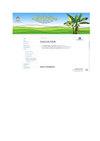Understanding blood and serum values of the agouti (Dasyprocta spp.): A rodent of the Neotropics with the potential to be domesticated
IF 0.3
Q4 AGRONOMY
引用次数: 3
Abstract
This short communication is intended to provide information on the blood and serum biochemical parameters of the agouti ( Dasyprocta spp.). Information on blood and serum biochemical parameters of this neo-tropical rodent is very scarce. Three agouti species from the Neotropical region were included in this report: Dasyprocta leporina , Dasyprocta fuliginosa and Dasyprocta prymnolopha . Several blood parameters were similar irrespective of the species, location, physiological state and method of restraint when blood was collected. Some of these parameters were red blood cell count, haemoglobin, haematocrit and mean corpuscular volume. Differences seen in some parameters were attributed to the differences in physiological state or environmental impact on the animal. The literature that was available showed a large time gap of approximately thirty (30) years in the reporting of blood parameters in the agouti. Early work was done in the mid-1970s and then recommenced in the mid-2000s. Some biochemical parameters such as triglycerides, amylase, chloride, sodium, potassium, bilirubin and uric acid were only recorded in the literature once and comparison of values was impossible. These parameters require further investigation which can be done in future studies. The dearth of information on the blood profile of the agouti gives justification for further research to be done in this regard as well as more detailed analysis of the effects that the environment and physiological states may have on haematological and biochemical parameters.了解agouti(Dasyprocta spp.)的血液和血清价值:一种有可能被驯化的新热带啮齿动物
这篇简短的通讯旨在提供关于阿戈提(Dasyprocta spp.)的血液和血清生化参数的信息。关于这种新热带啮齿动物的血液和血液生化参数的资料非常稀少。本报告包括了三种来自新热带地区的阿古提物种:勒氏大蠊、富尔吉诺萨大蠊和普里姆诺洛帕大蠊。采集血液时,无论物种、位置、生理状态和约束方法如何,几个血液参数都是相似的。其中一些参数是红细胞计数、血红蛋白、红细胞压积和平均红细胞体积。某些参数的差异归因于动物生理状态或环境影响的差异。现有文献显示,阿古提的血液参数报告存在大约三十(30)年的大时间间隔。早期的工作在20世纪70年代中期完成,然后在2000年代中期重新开始。一些生化参数,如甘油三酯、淀粉酶、氯化物、钠、钾、胆红素和尿酸,在文献中只记录过一次,无法进行数值比较。这些参数需要进一步研究,可以在未来的研究中进行。由于缺乏关于阿古提人血液特征的信息,有理由在这方面进行进一步的研究,并对环境和生理状态可能对血液学和生化参数产生的影响进行更详细的分析。
本文章由计算机程序翻译,如有差异,请以英文原文为准。
求助全文
约1分钟内获得全文
求助全文
来源期刊

Tropical Agriculture
Social Sciences-Development
CiteScore
0.50
自引率
0.00%
发文量
0
期刊介绍:
The overarching aim of Tropical Agriculture is to contribute to the process of agricultural development in tropical agro-ecosystems, through publication of papers in the area of agricultural science and technology. The specific objectives of the Journal are: -To address the practical aspects of sustainable tropical agriculture production, improvement, protection and commodity utilization, worldwide. -To foster the application of science and technology to understanding and removal of constraints to tropical agricultural productivity. -To publish the results of original research which make significant contributions to knowledge on the practice of sustainable and productive tropical agriculture. The Journal publishes papers in the following areas of tropical agriculture: -Soil Science and Technology -Environmental Science and Technology -Crop Science and Technology -Livestock Science and Technology as well as: Food and Nutrition Policy, Post-Harvest Technology, Agricultural Economics and Extension, Agribusiness
 求助内容:
求助内容: 应助结果提醒方式:
应助结果提醒方式:


